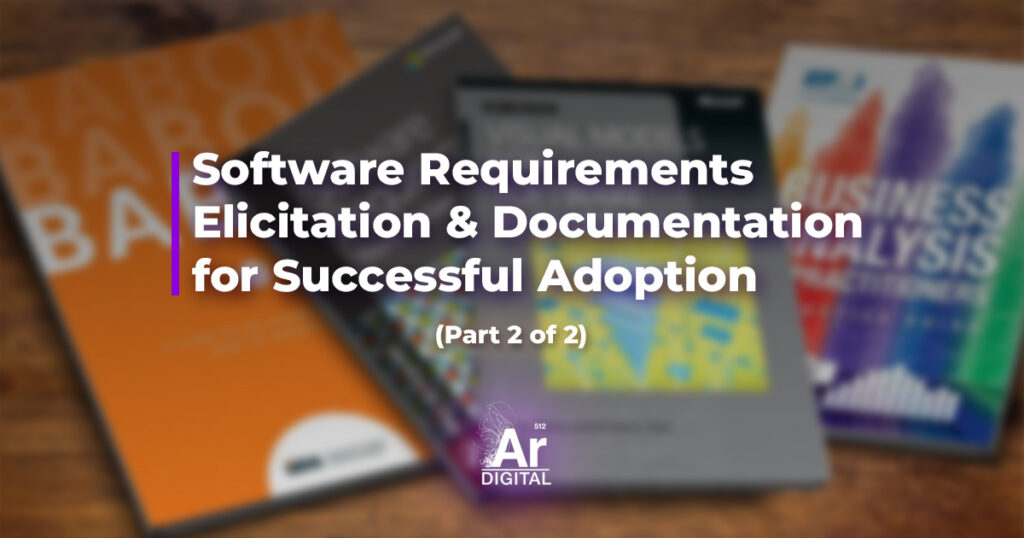Mastering Software Requirements Elicitation and Documentation for Successful Adoption
In the ever-evolving landscape of technology, the process of software selection and adoption has become a crucial decision for businesses aiming to enhance their operations and stay competitive. Defining precise software requirements is the cornerstone of this process, serving as a roadmap that guides developers and stakeholders toward a successful outcome. Building upon the understanding established in our previous article about the significance of software requirements, “Mastering Software Requirements Elicitation and Documentation for Successful Adoption” is focused on the best practices for eliciting and documenting these requirements, ensuring a seamless transition towards software adoption.
10 Steps to Effective Software Requirements Elicitation and Documentation
1. Engage Stakeholders at Every Level
The success of any software project heavily relies on effective communication and collaboration among stakeholders. Begin by identifying all potential stakeholders, from end-users to executives, and involve them early in the process. Conduct workshops, interviews, and surveys to understand their needs, pain points, and expectations. This collaborative approach not only provides diverse perspectives but also ensures that the software aligns with the overall business strategy.
2. Define Clear and Measurable Objectives
A software project without well-defined objectives is akin to a ship without a compass. Clearly articulate the goals and outcomes you intend to achieve with the new software. Ensure that these objectives are specific, measurable, achievable, relevant, and time-bound (SMART). This clarity will serve as a foundation for all subsequent stages of development.
3. Prioritize Requirements
Not all requirements are created equal. It’s imperative to distinguish between must-have and nice-to-have features. Employ techniques such as MoSCoW (Must have, Should have, Could have, Won’t have) to categorize requirements based on their importance and impact. This approach aids in focusing resources on critical elements while allowing flexibility for additional features.
4. Leverage Prototyping and Mockups
Visual aids can significantly enhance requirement elicitation. Create prototypes or mockups of the software’s user interface to help stakeholders visualize the end product. Tools like wireframing software and interactive mockup resources can facilitate this process. This can spark valuable discussions and lead to the discovery of previously overlooked requirements.
5. Software Requirements Elicitation and Documentation - Document Clearly and Concisely
The importance of thorough documentation cannot be overstated. Develop a comprehensive requirements document that outlines each requirement, its purpose, acceptance criteria, and any dependencies. Use clear language and avoid jargon to ensure that both technical and non-technical stakeholders can comprehend the document effortlessly.
Did you know that our Requirements Modeling Language (RML®) was developed to support better communication?
6. Review and Validate
Once the requirements are documented, conduct rigorous reviews and validation sessions. Engage stakeholders once again to confirm that the requirements accurately reflect their needs and expectations. This iterative process helps identify any discrepancies early on, preventing costly revisions in later stages of development.
7. Maintain Flexibility
In the realm of technology, change is inevitable. As the project progresses, new insights and challenges may arise. Embrace an agile mindset that allows for flexibility in adjusting requirements. Regularly reassess priorities and make necessary updates to the requirements document based on changing circumstances.
8. Embrace Automation Tools
Managing and tracking requirements manually can be a daunting task, especially for complex projects. Embrace software tools designed for requirement management. These tools enable version control, traceability, and collaboration among team members, streamlining the entire process and reducing the risk of errors.
9. Foster Open Communication
Communication breakdowns can derail even the most meticulously planned projects. Maintain an open channel of communication among all stakeholders throughout the development lifecycle. Regular status updates, progress reports, and feedback sessions keep everyone aligned and informed.
10. Conduct User Acceptance Testing (UAT)
Before fully adopting the software, conduct thorough user acceptance testing. Involve end-users in testing the software against the documented requirements. Their feedback is invaluable in identifying any discrepancies and ensuring the software meets their needs effectively.
Are you tired of software projects that fall short of expectations due to vague or misunderstood requirements? Unlock the potential of your team with our expert-led requirements training!
Mastering Software Requirements Elicitation and Documentation is the Foundation for Successful Software Adoption
Eliciting and documenting software requirements is a critical phase that lays the foundation for successful software adoption. By engaging stakeholders, setting clear objectives, prioritizing requirements, leveraging prototyping, and maintaining flexibility, organizations can navigate this phase with confidence. Thorough documentation, continuous validation, and effective communication are vital components that contribute to the success of the software project. Embrace modern tools and methodologies to streamline the process, and remember that the journey towards successful software adoption is a collaborative effort that reaps rewards for the entire organization.




